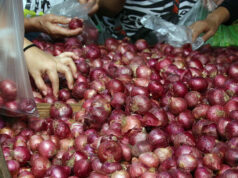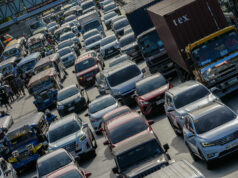2017 PSA survey shows 9 in 10 families have improved source of drinking water
By Christine Joyce S. Castañeda, Senior Researcher
NINETY-FOUR PERCENT (94%) of 24.354 million families have access to improved source of drinking water, according to the Philippine Statistics Authority’s (PSA) 2017 Annual Poverty Indicators Survey (APIS).
In the urban areas, 97.4% of families have improved source of drinking water as compared to 90.9% in the rural areas.
The World Health Organization and the United Nations Children’s Fund’s Joint Monitoring Report defined improved drinking water sources as “those that have potential to deliver safe water by nature of their design and construction.” These include piped water into dwellings; tube wells or boreholes; protected dug wells and springs; rainwater; and standpipes, among others.
The top three sources of drinking water were water refilling stations from “improved source,” which accounted for 37.7%, followed by piped water into dwellings at 20.3%, and tube wells or boreholes at 12%.
Relative to the Sustainable Development Goal (SDG) 6.1 which aims to “achieve universal and equitable access to safe and affordable drinking water for all” by 2030, drinking water was classified according to service levels, namely: safely-managed, basic, limited, unimproved and surface water.
Among the Filipino families, 27% used “safely-managed” drinking water “from an improved water source located on premises, available when needed and free from fecal contamination.”
Around 91% of the families have at least “basic” drinking water services in which water comes from improved sources and collection time would not take more than 30 minutes for a roundtrip including queuing.
Meanwhile, around 3% of families have “limited” drinking water services, in which they have access to improved water sources, but it takes them more than 30 minutes to collect water.
Around 5% have “unimproved” drinking water services, or those who collect drinking water from unprotected dug wells or springs.
Lastly, less than 1% collect water from surface water, or directly from rivers, dams, lakes, or canals.
By income groups, 7.1% and 14.9% of families in the first quintile — or those that make up the lowest 20% in terms of income — have “safely-managed” and “unimproved” sources of drinking water, respectively, as compared to the 48.5% and 0.5% in the fifth quintile or those families belonging to the highest 20% income group.
The 2017 round of APIS also includes a water quality testing module (WQT) which monitors the presence of Escherichia coli (E.coli) — a fecal indicator bacteria — in the drinking water.
Based on the results from 1,300 households sampled, around one in every three families have drinking water free from fecal contamination or with zero E. coli. Those in the urban areas likely have access to drinking water free from contamination at 62% compared to 39% in the rural areas.
SANITATION AND HYGIENE
The report also contained data on sanitation facilities. In particular, the PSA defines improved sanitation facilities as those “designed to hygienically separate excreta from human contact.” These include flush/pour flush to piped sewer systems, septic tanks or pit latrines, ventilated improved pit latrines, composting toilets or pit latrines with slabs.
This is in line with goal 6.2 of the SDG which aims to “achieve access to adequate and equitable sanitation and hygiene for all and end open defecation, paying special attention to the needs of women and girls and those in vulnerable situations” by 2030.
Sanitation has been classified according to service levels, namely: safely-managed, basic, limited, unimproved and open defecation.
The PSA noted that 74% of Filipino families have at least “basic” sanitation services, defined as those sanitation facilities which are not shared with other households.
Meanwhile, 15% have “limited” sanitation or those with shared facilities while 6% have “unimproved” services or those who use hanging or bucket latrines or pit latrines without a slab or platform.
Lastly, 6% practice open defecation.
Sought for comment, Union Bank of the Philippines, Inc. Chief Economist Ruben Carlo O. Asuncion said in an email that drinking water access is “positively correlated” with economic development.
“This means that as incomes increase, economic actors have potentially easier access to amenities such as drinking water sources. Since the Philippines has been consistently growing economically, its population is getting more access to various life improvements, one of which is access to drinking water,” he said.
The economist noted that the country is on track in achieving SDG 6.1, saying that “almost 100%” of families having access to “basic” drinking water is already a “great achievement.”
He added that the government should “carefully and strategically plan for sustainable and efficient drinking water sources for all Filipinos.”
“No Filipino in the near future should struggle because they do not have access to ample drinking water,” Mr. Asuncion said.
The APIS is a nationwide survey by the PSA designed to provide non-income indicators related to poverty at the national level.



